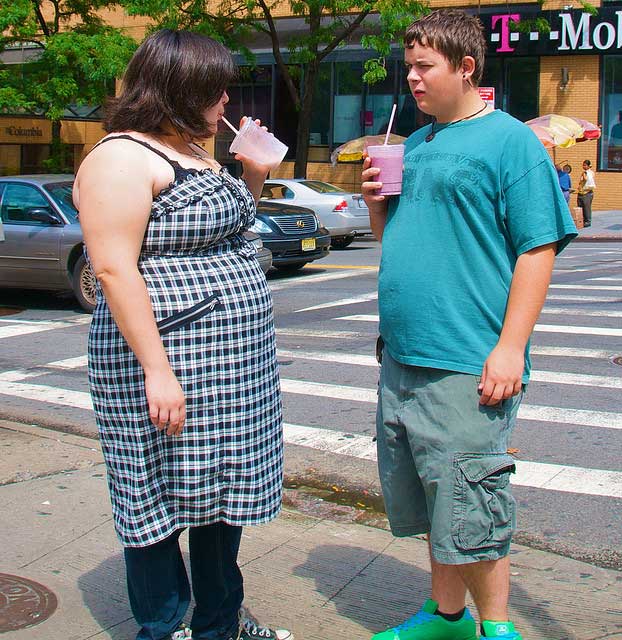Here is the perfect example of the obesity debate in America. Last Friday, the New England Journal of Medicine published the following:
The increase in consumption of sugar-sweetened beverages among both adults and children in the United States and other countries is considered a potential contributor to the obesity pandemic. Sugar intake from sugar-sweetened beverages alone, which are the largest single caloric food source in the United States, approaches 15% of the daily caloric intake in several population groups. Adolescent boys in the United States consume an average of 357 kcal of the beverages per day. Sugar-sweetened beverages are marketed extensively to children and adolescents, and large increases in consumption of sugar-sweetened beverages have occurred among black and Mexican-American youth
Which prompted a response from the American Beverage Association (ABA):
The fact remains: sugar-sweetened beverages are not driving obesity. By every measure, sugar-sweetened beverages play a small and declining role in the American diet:
- While Americans consume about 617 more calories today than they did in 1970, more than 90 percent of those incremental calories come from sources other than beverages.
- Sugar-sweetened beverages contribute about 7 percent of the calories in the average American’s diet.
- Caloric intake from sugar-sweetened beverages declined by more than 20 percent between 2001 and 2010, yet obesity rates continued to rise.
And the most interesting part is the disputed fact – is soda 7% or 15% of the American diet? The answer – it depends. The Journal said 15% in “several population groups” and hinted at children, minorities, and adolescent boys as those groups. While the AMA did not give details and so we can only assume 7% is for all population groups.
This type of confusing disagreement is common in the food industry. One obvious statement is blurred by a logical response, and the argument that wins isn’t the science – it’s the commercials on TV and packaging on food.
The best thing we can do is become more educated eaters and support scientific studies that can explain the truth. In the end, this may be like the smoking and cancer debate of the 1980s – where multiple attempts were made to confuse the public, but in the end the truth came out.
***
You can read the full piece in the New England Journal of Medicine or a summary at Time.com – and here is the ABA Press Release.
